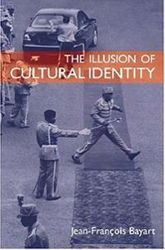
I had the good fortune to be able to accompany a group of my students on a short-term study abroad trip to India last year. It’s perhaps no surprise that, while there, I consumed a lot of Indian food. On the surface, that last sentence may seem rather ridiculous if only because it seems so obvious — much like saying “While in India, I saw Indian things!” But an event on our trip forced me to reconsider just how simple that observation really is, and where the parameters surrounding “authentic” and “traditional” cultural labels really lie. Continue reading “Pizza Hut: The Best Indian Food Around”



 Authentic Chinese food just doesn’t seem so authentic
Authentic Chinese food just doesn’t seem so authentic Each New Year’s day, since 2008, two National Hockey League teams face-off — as they say — in an outdoor game that’s called the
Each New Year’s day, since 2008, two National Hockey League teams face-off — as they say — in an outdoor game that’s called the 

 “You have to admit, this is exactly what America would utilize cloning technology for.”
“You have to admit, this is exactly what America would utilize cloning technology for.” Yes, I’m now old enough to remember things that some around me have never heard of — no, not the Hindenburg disaster but, say, lighter moments from popular culture. For example, a niece who used to keep me updated on cool music that I ought to be aware of (she was my own personal fountain of youth, in other words), once told me about The Ataris.
Yes, I’m now old enough to remember things that some around me have never heard of — no, not the Hindenburg disaster but, say, lighter moments from popular culture. For example, a niece who used to keep me updated on cool music that I ought to be aware of (she was my own personal fountain of youth, in other words), once told me about The Ataris.  “This discourse on an entirely reconstituted, fantasized past is first of all a critical commentary on the present. In other words, it is bitterly disputed. Thus the restoration of works of art elicits virulent public debate, such as that which accompanied the restoration of the Sistine Chapel. The
“This discourse on an entirely reconstituted, fantasized past is first of all a critical commentary on the present. In other words, it is bitterly disputed. Thus the restoration of works of art elicits virulent public debate, such as that which accompanied the restoration of the Sistine Chapel. The